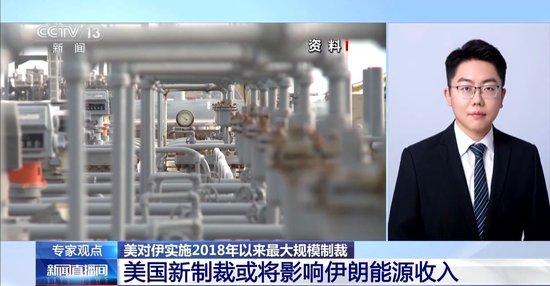
The Office of Foreign Assets Control at the U.S. Treasury announced on the 30th that it would impose sanctions on the shipping network controlled by Iranian businessman Mohammad Hossein Shamkhani, involving over 50 entities and individuals as well as over 50 oil tankers and container ships. This marks the largest scale of sanctions since the U.S. government’s “maximum pressure” campaign against Iran in 2018. On the same day, the U.S. State Department also declared that it would include 20 entities involved in the trade and transportation of Iranian oil and petrochemical products into its sanctions list, freezing 10 vessels.
The U.S. sanctions against Iran primarily target the country’s energy sector. Previously, the U.S. had been imposing sanctions on Iran’s oil industry. What impact will these new measures have on Iran’s related industries? Why did the U.S. introduce this scale of sanctions at this time?
Li Zixin, Assistant Researcher at the China Institute of International Studies: The impact of the U.S. sanctions is significant, and from the perspective of the targets, there are both purposes to pressure Iran’s regime and to target the personal interests of core power figures within Iran, hoping to disintegrate the unity of Iran’s ruling structure internally.
The oil industry is an important sector supporting Iran’s national finances. This is the largest scale of sanctions imposed since the initiation of the “maximum pressure” policy in 2018, targeting the core transportation network for Iran’s oil exports. This sanction not only involves a large number of vessels but also directly affects Iran’s global transport channel for petrochemical products from Russia, which is often considered a specific means of avoiding U.S. unilateral sanctions through shadow trade.
It is expected that these sanctions will bring a severe blow to Iran’s energy income, compressing existing transport capacity and trade channels. Third parties may also be cautious about participating in trade activities with these parties due to concerns. In terms of timing and purpose of the U.S. sanctions, there are multiple intentions.
Firstly, the most prominent aim is to compel change through pressure. After direct military strikes by the U.S. and Israel against Iran, Iran has suspended cooperation with the International Atomic Energy Agency and is holding a wait-and-see attitude towards restarting diplomatic negotiations with the U.S. Iran demands that mutual trust must be rebuilt before negotiations can begin, but the U.S. obviously cannot wait so long. By increasing pressure, it aims to force Iran to break its own bottom line principles and make concessions on key issues, thereby accepting the U.S.’s final demand-style negotiation requests.
Secondly, Europe has proposed that if an agreement cannot be reached with Iran by the end of August, a so-called rapid recovery mechanism should be activated. At this point, the U.S. announces new sanctions, under dual siege, putting Iran’s ability to cope under greater test.
Thirdly, the U.S. sanctions involve family members of senior advisors to Iran’s Supreme Leader. This provocation of internal contradictions and distrust within Iran’s leadership, accelerating the weakening of Iran’s political stability, can be seen as clear. In fact, one of the focuses of the U.S. and Israel’s military operation against Iran in June was also to weaken Iran’s political stability. This additional sanction could be seen as a continuation of related actions in the political and economic fields.